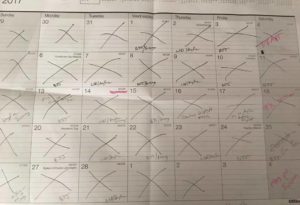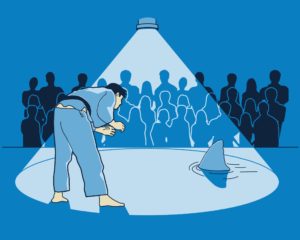I will be teaching my fundamental Immediate Action Jiu-Jitsu and Immediate Action Pugilistic Coursework in Chapel Hill, NC on November 4-5th, 2017. This will be set up as two individual days – one day will cover surviving on the ground (IAJJ), and the other day will standing striking and clinch (IAP). Patrons can attend one or both days as they wish. There will also be the option to attend either morning only if you are time constrained.
Cost will be $150/person for one day, or $250 if you sign up for both. If you want to attend the morning only of either day, that will be $100.
Saturday will be the ground focused day and it will run from 1PM- 9:30PM. Sunday will be the standing day, and it will run from 9AM-5:30 pm.
The location will be:
https://www.chapelhilljiujitsu.net/
To register, contact Mike Levandoski at :
levandmi@gmail.com
See below for coursework description and requirements:
Immediate Action Jiu-jitsu
Real World Application of Brazilian Jiu-Jitsu in a Weapon-Based-Environment
Contrary to popular belief, many empty hand fights and those involving weapons, end up on the ground. No amount of pontificating or self-proclaimed “expert“ posturing will change this simple fact. If you ignore this reality, you may very well find yourself in a situation you cannot handle with disastrous consequences. This course is designed to give the layman a realistic and functional set of concepts, techniques, methodologies, training drills and experiences that will prepare them for a worst case “ground-fight” scenario. All techniques and concepts are high percentile applications, which span a wide spectrum of confrontations. Training consists of presentation, drilling and Force-On-Force evolutions providing attendees with immediate feedback regarding the efficacy of the skills learned. The goal of this course is not to create a “ground fighter” or grappler. The objective is to provide attendees who have limited training time and resources with solid ground survival and escape fundamentals geared toward the increasingly violent weapon based environments they may live, work and/or travel within. And all techniques/concepts are from Brazilian Jiu-Jitsu and are combat proven over the past 80 years by thousands of practitioners, including the U.S. Army.
•These methods are for everyone regardless of physical condition – young, old, male, female, athlete or not – You DO NOT have to be a professional fighter to perform at a functional level. This will be a class about physical training, but it is NOT boot camp. Participants may go at the pace that is comfortable for them, while trying to push the envelope of their own individual performance.
•Requirements: Loose, comfortable but durable clothes, mouthpiece, knee pads, elbow pads, cup, notebook, and an open mind
The course is divided into modules that address specific situations. Seminars/training can be customized to fit your needs by arranging for the appropriate modules to be covered. Among the topics covered by the modules include:
Surviving/defending/escaping when you are on the ground underneath an attacker
Surviving/defending/escaping when you are on the ground and your opponent is standing
Functional methods of getting back to your feet
Countering takedowns and remaining on your feet
IFWA (in-fight weapon access)
Denying your opponent’s weapon access – understanding technique, positional hierarchy AND timing
Multiple opponents – realistically maximizing your chances
Surviving inside the guard
Proper usage of the guard to win/escape
Defending against punches, elbow strikes, stomps, kicks, etc…
Proper role of “dirty tactics”
Essential training principles, methods, & drills
How these concepts & techniques remain true with or without weapon involvement
Learning to deal with the most common MMA attacks and holds
Recognizing and defending against common submissions (guillotine, rear naked choke, triangle, arm bar, etc.)
Structuring and balancing your training and integrating it into a busy real world lifestyle
Immediate Action Pugilism
Boxing for Self-Preservation in the Weapons Based Environment
Sometimes, in order to defend our loved ones, and ourselves the only tool we might have to rely on is our own body. Even if you have external weapons, you might not be able to access them. Your safety may come down to how well you can survive a hand-to-hand confrontation. The Immediate Action Pugilism course is designed to give the layman a realistic and functional set of concepts, techniques, methodologies, training drills and experiences that will prepare them for a worst case H2H scenario. All techniques and concepts are high percentile applications, which span a wide spectrum of confrontations. Training consists of presentation, drilling and Force-On-Force evolutions providing attendees with immediate feedback regarding the efficacy of the skills learned. The goal of this course is not to create a professional boxer or MMA competitor. The objective is to provide attendees who have limited training time and resources with solid fundamentals geared toward the increasingly violent weapon based environments they may live, work and/or travel within.
All the techniques presented are based on orthodox and MMA boxing methods and are the best, most functional and high percentage moves and tactics available.
.
• These methods are for everyone regardless of physical condition – young, old, male, female, athlete or not – You DO NOT have to be a professional fighter to perform at a functional level. This will be a class about physical training, but it is NOT boot camp. Participants may go at the pace that is comfortable for them, while trying to push the envelope of their own individual performance.
• Requirements: Boxing gloves (at least 12oz or bigger unless per-authorized by the instructor), loose, comfortable but durable clothes, mouthpiece, cup, notebook, and an open mind. MMA gloves are strongly encouraged, but are not mandatory.
Immediate Action Pugilism is divided into modules that address specific situations. Seminars/training can be customized to fit your needs by arranging for the appropriate modules to be covered. Among the topics covered by the modules include:
Why & How to use Boxing in a WBE
Underlying Concepts and Mindset for useDealing with the Sucker Punch / Ambush
The Default Cover Transitioning to and Regaining the Initiative1st stage of defense – the fighting platform2nd stage of defense – arm motion, footwork, level change
1st stages of offense – jab & cross; proper method of delivering impact safely
Secondary Striking Tools (Eye Jab, Elbow, Knee, Slap,)Fundamentals of the Clinch/Safely Entering
Controlling the Entanglement Individual & Partner Drills.
Gradual introduction and immersion into sparring.
Fighting at Close Quarters; attached and unattached striking.
Disengaging from the clinch.
Safely gaining distance for escape, weapons access, or orientation reset.
Keeping the Fight standing, realistically defending the takedown.
Performance Coaching and Troubleshooting; Insights and Suggestions for Solo Training.
Tips and pointers on how to train the material with the limitations of a real world lifestyle.




